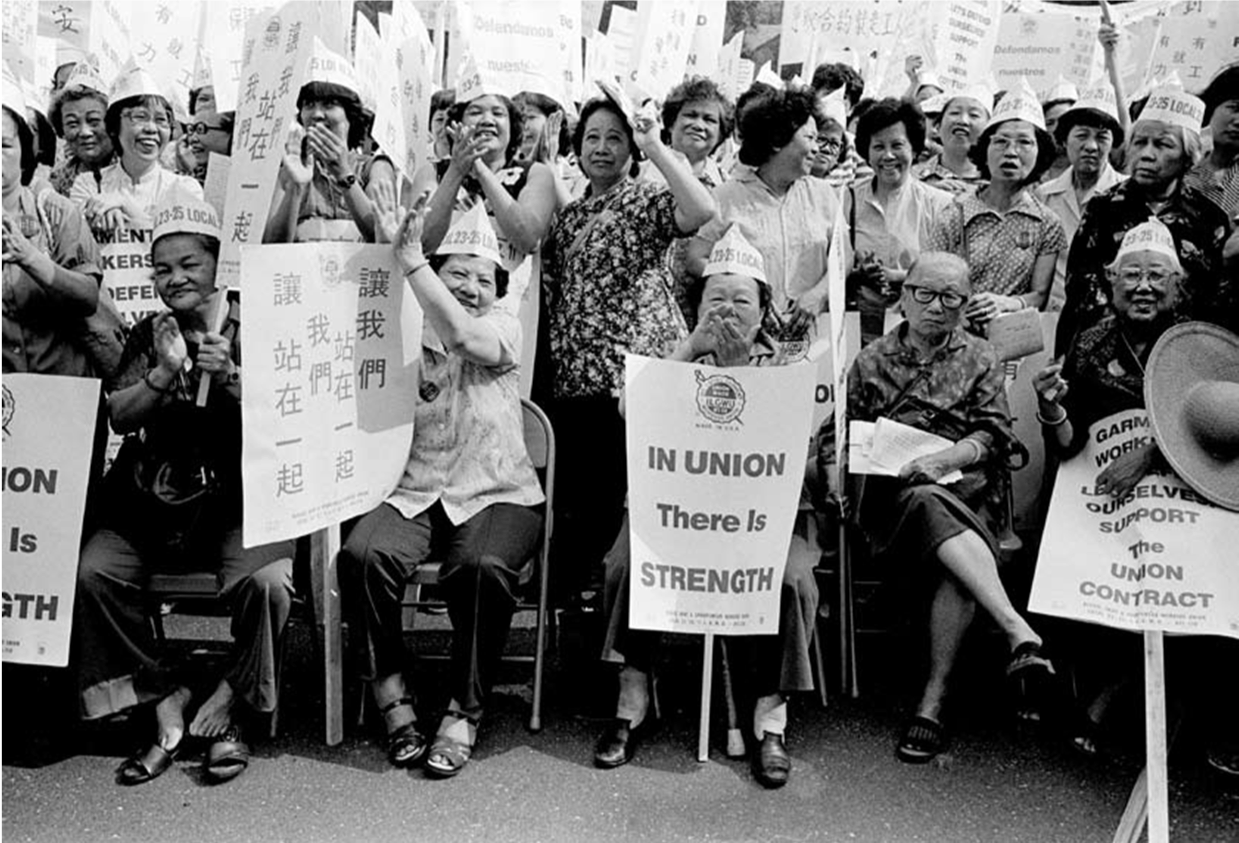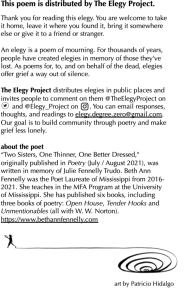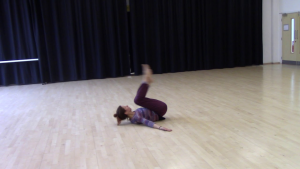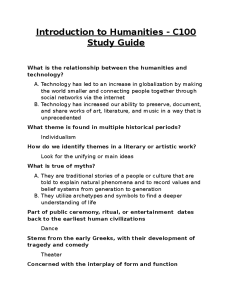Asian American women’s history is a crucial yet often overlooked part of the broader narrative of American culture. At the Schlesinger Library, an innovative exhibition seeks to shine a light on this rich and complex history, showcasing the voices of women who have historically been marginalized. Through visual storytelling and archival research, artifacts from the past are being revitalized to highlight the journeys of Asian American women, many of whom have contributed significantly to society while remaining largely invisible. This initiative invites viewers to challenge their perceptions and understand the cultural history that shapes the identities of Asian American women today. By engaging with their stories, we can begin to appreciate the diverse experiences that have influenced the fabric of American society for over a century.
The chronicles of Asian American women encompass a wide spectrum of experiences throughout U.S. history, often characterized by struggles and triumphs that resonate with contemporary issues. Known both for their resilience and innovation, these women have played vital roles in various social spheres, from activism to the arts. As documented in recent exhibitions, the narratives of these women offer a multi-faceted perspective on America’s cultural evolution, revealing the intersections of gender, ethnicity, and identity. The Schlesinger Library’s endeavor to uncover and share these accounts through immersive visual storytelling not only enriches our understanding but also highlights the importance of archival research in preserving these vital histories. By revisiting these stories, we can honor the past and ensure that the contributions of Asian American women are recognized and celebrated.
The Significance of Archival Research in Asian American Women’s History
Archival research plays a crucial role in uncovering the often-overlooked narratives of Asian American women. The Schlesinger Library’s exhibit highlights diverse artifacts that tell the stories of these women, many of whom have remained in the shadows of history. By embracing archival materials, researchers and students can peel back layers of erasure and discover rich accounts of resilience and cultural heritage embedded in these records. This process not only validates the experiences of Asian American women but challenges the dominant narratives that have historically marginalized their contributions.
Moreover, through careful archival research, educators and students alike are tasked with the responsibility of contextualizing these women’s experiences within the broader tapestry of American history. The exhibit ‘Illuminate’ serves as a profound reminder of the power of visual storytelling and cultural history, showcasing how photographs and documents can evoke deep emotions and historical insights. By analyzing these artifacts, viewers are invited to confront the complexities of identity and the societal structures that have shaped the lives of Asian American women over the last century.
Visual Storytelling and Its Impact on Cultural History
Visual storytelling emerges as a powerful tool in the exploration of Asian American cultural history, bridging the gap between past and present. The exhibit at the Schlesinger Library uses photographs and illustrations, such as those created by artist Shaina Lu, to transform archival materials into a vivid narrative. These visual elements not only attract viewers but also serve to personalize and humanize the historical figures captured within the frames. By presenting these women as subjects rather than objects, the exhibit allows for a deeper emotional connection, fostering greater understanding and empathy.
In this way, visual storytelling contributes to the reclamation of Asian American women’s narratives, showcasing their rich diversity and complex identities. Visitors to the exhibit are not merely passive observers; they engage with the stories of Asian American women through art and imagery that amplifies their voices. These layered portrayals challenge stereotypes and misconceptions, reminding society of the significant roles these women have played in shaping cultural history. As a result, the integration of artistic interpretation into historical exhibits amplifies the importance of recognizing Asian American women’s contributions to both history and contemporary society.
Exploring the Erasure and Hypervisibility of Asian American Women
The dual phenomena of erasure and hypervisibility are central themes in the study of Asian American women’s history. Many Asian American women have been rendered invisible in historical narratives, often omitted from mainstream discussions of cultural significance and contributions. During the 1904 St. Louis World’s Fair, for example, Ainu and Visayan women were presented as living exhibits, objectifying them while simultaneously eclipsing their true stories. This history of objectification and misrepresentation highlights the need for proactive measures to uncover and validate these women’s experiences.
Conversely, the contemporary cultural landscape can sometimes place Asian American women in a position of hypervisibility, where they are commodified or reduced to stereotypes within popular media. This complex interplay raises critical questions about representation and agency, particularly as it pertains to how Asian American women narrate their own stories today. Through educational efforts, such as the Schlesinger Library’s exhibit, there is a concerted effort to empower these women by bringing their voices and stories to the forefront, allowing for a more nuanced understanding of their diverse experiences and contributions.
Contributions of Asian American Women to Activism and Social Justice
Asian American women have played pivotal roles in various social justice movements throughout history, yet their contributions are frequently overlooked. The Schlesinger Library’s exhibit emphasizes the organizing efforts of Asian American women in Boston’s Chinatown and beyond, revealing how they have led the charge for justice in their communities. Their stories illustrate not only personal resilience but also collective action against systemic injustices, thus enriching the narrative of American activism.
By documenting these efforts, the library helps to illuminate the critical impact of Asian American women in shaping social change. As contemporary activists draw from this history, they are reminded of the legacies of those who came before them. This intergenerational connection fosters a sense of solidarity, encouraging new generations of Asian American women to continue the work of advocacy and social justice, all while reclaiming their rightful place in the broader American narrative.
The Role of Education in Preserving Asian American Women’s Stories
Education serves as a powerful medium for preserving and promoting the narratives of Asian American women. The collaborative course co-taught at the Schlesinger Library encouraged students to engage deeply with archival materials, prompting them to research and uncover the stories of women who have often been neglected in historical accounts. Such educational initiatives not only enhance students’ understanding of Asian American women’s history but also equip them with critical research skills that can be applied in their future endeavors.
Furthermore, this model of education fosters a sense of ownership among students regarding the narratives they study. By investigating the lives of historical figures like Ah Fong and the contemporary struggles of Asian American women, students gain insight into the broader consequences of historical erasure and the significance of representation. Ultimately, through dedicated educational programs, future scholars and activists can continue to elevate the voices and stories of Asian American women, ensuring they are no longer consigned to the margins of history.
Archival Artifacts: A Window into Asian American Women’s History
The array of archival artifacts displayed at the Schlesinger Library forms an invaluable repository of Asian American women’s history. These artifacts, ranging from photographs and court documents to personal letters and zines, encapsulate the diverse experiences and expressions of Asian American women’s lives. As visitors engage with these items, they are offered a unique opportunity to step back in time and witness the realities that shaped these women’s experiences, thus fostering a deeper understanding of their historical significance.
Moreover, these artifacts serve as a catalyst for discussion and reflection. By analyzing the items on display, individuals can draw connections between past and present, discovering the ongoing relevance of these stories in today’s society. This reflection leads to vital conversations about identity, culture, and the journey towards recognition and agency for Asian American women. Through the lens of these archival materials, the exhibit emphasizes not only the importance of preserving history but also the necessity of engaging with it critically.
Legacy of Notable Asian American Women in History
The legacy of notable Asian American women is woven throughout the fabric of American history, showcasing their remarkable contributions across various fields. Figures such as Grace Zia Chu and Madhur Jaffrey, who are frequently featured in the Schlesinger Library’s archives, illustrate the powerful ways these women have shaped culinary arts and cultural narratives. Their personal stories, once hidden from view, now serve as beacons of inspiration for future generations, emphasizing the richness of diversity in American culture.
Additionally, the legacy of Asian American women extends beyond individual achievements; it reflects a collective journey towards recognition and equality. By highlighting their stories, the exhibit champions the importance of representation within historical discourse and encourages visitors to explore the broader implications of these women’s experiences. As their narratives are documented and shared, we can begin to appreciate the fullness of American history, acknowledging the significant roles these women have played in cultivating a more inclusive society.
Rethinking Narratives: The Future of Asian American Women’s Stories
The future of Asian American women’s stories hinges on our ability to rethink and reshape historical narratives. As the Schlesinger Library’s exhibit challenges existing assumptions, it paves the way for a more inclusive understanding of history that recognizes the depth and complexity of Asian American women’s experiences. The exhibition serves as a model for how institutions can actively work to dismantle the frameworks that have historically silenced these voices, advocating for a broader and more accurate depiction of American history.
Looking ahead, it is crucial that efforts continue to amplify the stories of Asian American women through both academic and artistic endeavors. By embracing a variety of storytelling methods—be it through visual art, literature, or public discourse—we can ensure these narratives remain vibrant and relevant in the national consciousness. The ongoing work by archivists, educators, and activists alike plays a pivotal role in preserving and sharing these histories, thus fostering a greater understanding of the interconnectedness of all individuals within the American narrative.
Challenging Assumptions in Asian American Women’s Histories
Challenging assumptions regarding Asian American women’s histories is vital for dismantling entrenched stereotypes and misconceptions. The Schlesinger Library’s exhibit invites visitors to confront these assumptions head-on, questioning the narratives that have relegated Asian American women to the periphery of historical discourse. By presenting a more nuanced view of their contributions, the exhibit encourages a reevaluation of the ways in which history is recorded, taught, and understood, ultimately seeking to affirm the importance of diversity within historical studies.
Furthermore, this challenge extends beyond the confines of the exhibit, urging participants to reflect on the systemic issues that contribute to the marginalization of particular groups. Engaging with the histories of Asian American women fosters a broader conversation about representation and equity, prompting society to consider who gets to tell the stories of history and whose voices are amplified. Through this critical engagement, a more equitable future can be envisioned, one that honors and acknowledges the diverse tapestry of American experiences.
Frequently Asked Questions
What is the purpose of the Schlesinger Library’s exhibit on Asian American women’s history?
The exhibit, titled “Illuminate: Contextualizing Asian American Women’s Stories Through the Archives,” aims to shed light on the often-overlooked narratives of Asian American women throughout history. It showcases archival materials spanning 150 years, encouraging viewers to question their own assumptions about these women’s roles and contributions.
How does the Schlesinger Library utilize archival research to highlight Asian American women’s history?
Archival research at the Schlesinger Library plays a crucial role in uncovering and contextualizing the stories of Asian American women. By examining historical artifacts like photos, political posters, and documents, the exhibit illustrates how these women have been both marginalized and hyper-visible throughout history, providing a rich narrative that restores their importance in American cultural history.
What themes are explored in the exhibition on Asian American women?
The exhibition explores themes of erasure, hypervisibility, and the roles Asian American women have played in pivotal moments of U.S. history. It addresses significant historical contexts such as the Chinese Exclusion Act and Japanese American internment, while also linking these past events to contemporary issues like anti-Asian violence during the COVID-19 pandemic.
Who contributed to the development of the exhibit on Asian American women’s stories at the Schlesinger Library?
The exhibit was developed in partnership with a spring undergraduate course co-taught by Victor Betts and Erika Lee. Their students engaged in collaborative research and archival exploration, contributing to the narrative of Asian American women’s history by utilizing the library’s collections to bring attention to untold stories.
What types of artifacts can be found in the Schlesinger Library’s exhibit on Asian American women’s history?
Visitors to the exhibit will find a diverse range of artifacts, including historical photographs, political posters, comic books, and zines created by Asian American women. These materials provide a visual storytelling aspect that highlights their experiences and contributions to American society over the span of 150 years.
How does the exhibit at the Schlesinger Library aim to redefine American cultural history?
By highlighting the contributions and stories of Asian American women, the exhibit seeks to redefine American cultural history as inclusive of diverse experiences. It challenges conventional narratives that often marginalize these voices and emphasizes that Asian American history is an integral part of the broader American narrative.
What impact did the students have on the exhibition about Asian American women’s history?
Students at the Schlesinger Library played an essential role in shaping the exhibition. Their research projects and engagement with archival materials allowed them to explore the complexities of Asian American women’s history, contributing valuable insights that deepen the audience’s understanding and appreciation of these narratives.
What significance does the term “visibility” hold in the context of Asian American women’s history?
In the context of Asian American women’s history, “visibility” reflects the dual nature of these women being either rendered invisible in historical narratives or overly visible as objects of curiosity. The exhibit navigates this dichotomy by uncovering stories that have been overlooked, highlighting both their contributions and the societal perceptions they faced.
| Key Points |
|---|
| The Schlesinger Library’s exhibit ‘Illuminate’ highlights the often overlooked narratives of Asian American women through historical artifacts, including photos from the 1904 World’s Fair. |
| The exhibit features materials spanning 150 years, inviting viewers to reconsider the roles and representation of Asian American women in history. |
| Students from a course on Asian American women’s history collaborated to research and present these stories, aiming to rectify narratives of erasure. |
| The exhibition connects the historical experiences of Asian American women with contemporary narratives told by Asian American female chefs and activists. |
| The exhibit contextualizes the contributions of Asian American women against significant legislation and events like the Chinese Exclusion Act and Japanese American internment. |
| An ongoing goal is to expand collections that represent Asian American women while inviting questions about why their histories have remained largely unacknowledged. |
Summary
Asian American women’s history is crucial yet often overlooked in traditional narratives. The recent exhibition at the Schlesinger Library, ‘Illuminate: Contextualizing Asian American Women’s Stories Through the Archives,’ seeks to rectify this by showcasing the rich and varied histories of Asian American women. This initiative not only sheds light on forgotten stories from the past but also emphasizes the importance of recognizing and valuing the contributions of these women in shaping American history. By exploring both historical artifacts and contemporary voices, the exhibition encourages a deeper understanding of Asian American women’s roles, thereby fostering a more inclusive historical narrative.




